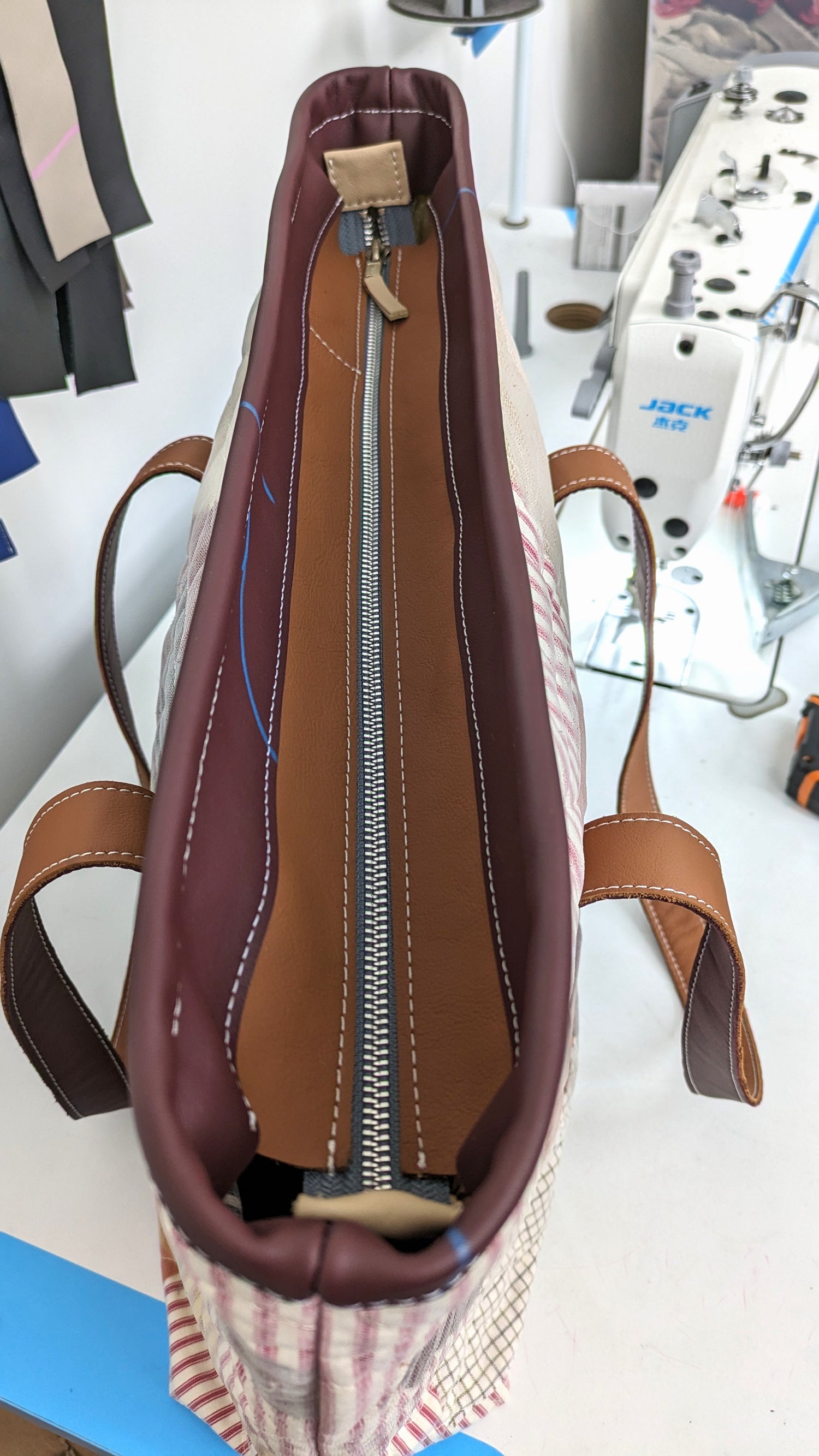
V&A TEXTILE CONSERVATION BAGS
The Victoria and Albert Museum in London reached out to us to explore ways to repurpose the unique fabric left over from their Textile Conservation department. We have developed a range of quilted bags in collaboration with Swisstulle, Muirhead Leather, MAES London and The Centre for Advanced Textiles
These bags are authentic, moral and innovative and they value the unloved and overlooked material, and that’s why we’re so, so proud of them.

Designing around the materials available has meant compromises and multiple design iterations. There’s no lining as real waste isn’t large enough, or would need patchworked which is too time consuming for sale. The wadding the V&A uses on it’s mannequins is removed in small pieces meaning the quilting varies in density because the wadding isn’t flat, and in order to pay a Real Living Wage and pension, standard price mark-ups are reduced.
Collapsible content
What is the V&A's Textile Conservation Waste?
These materials are a mix of exhibition waste which is primarily mannequin padding and fabric used to mount and conserve important and historical garments and textile objects. We love this material because of the proximity it has had in caring for some of the world’s most important textiles, seen and loved by thousands of people in the V&A’s exhibitions.
How do we manufacture the bags?
We essentially make a quilt where each layer is constructed from a problematic source of waste to a different company.
Our founder Deborah’s background as an artist is very apparent in these bags as they purposefully look like paintings. We do this by collaging the varied pieces of fabric on a tulle backing, creating visually appealing patterns and colour combinations.
Finally we create a laser cut leather label and handles to complete the bag.
Is it really zero-waste?
The only new fabric in the V&A bags is the thread we use for stitching it all together and the zip. We are working on ways to source a fastening means that is completely zero-waste.
